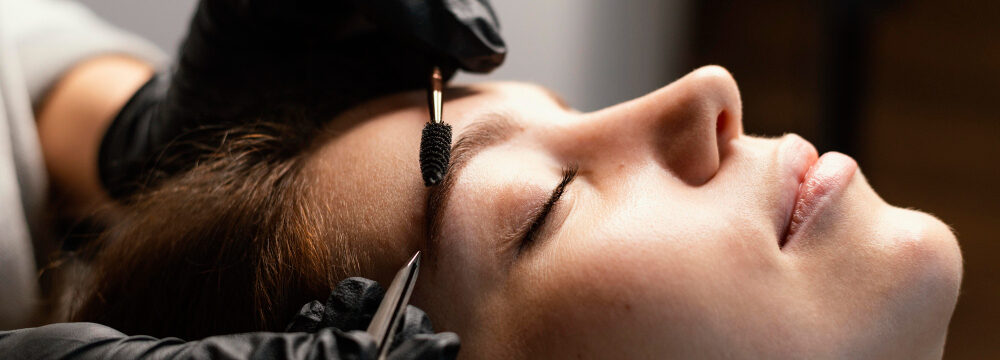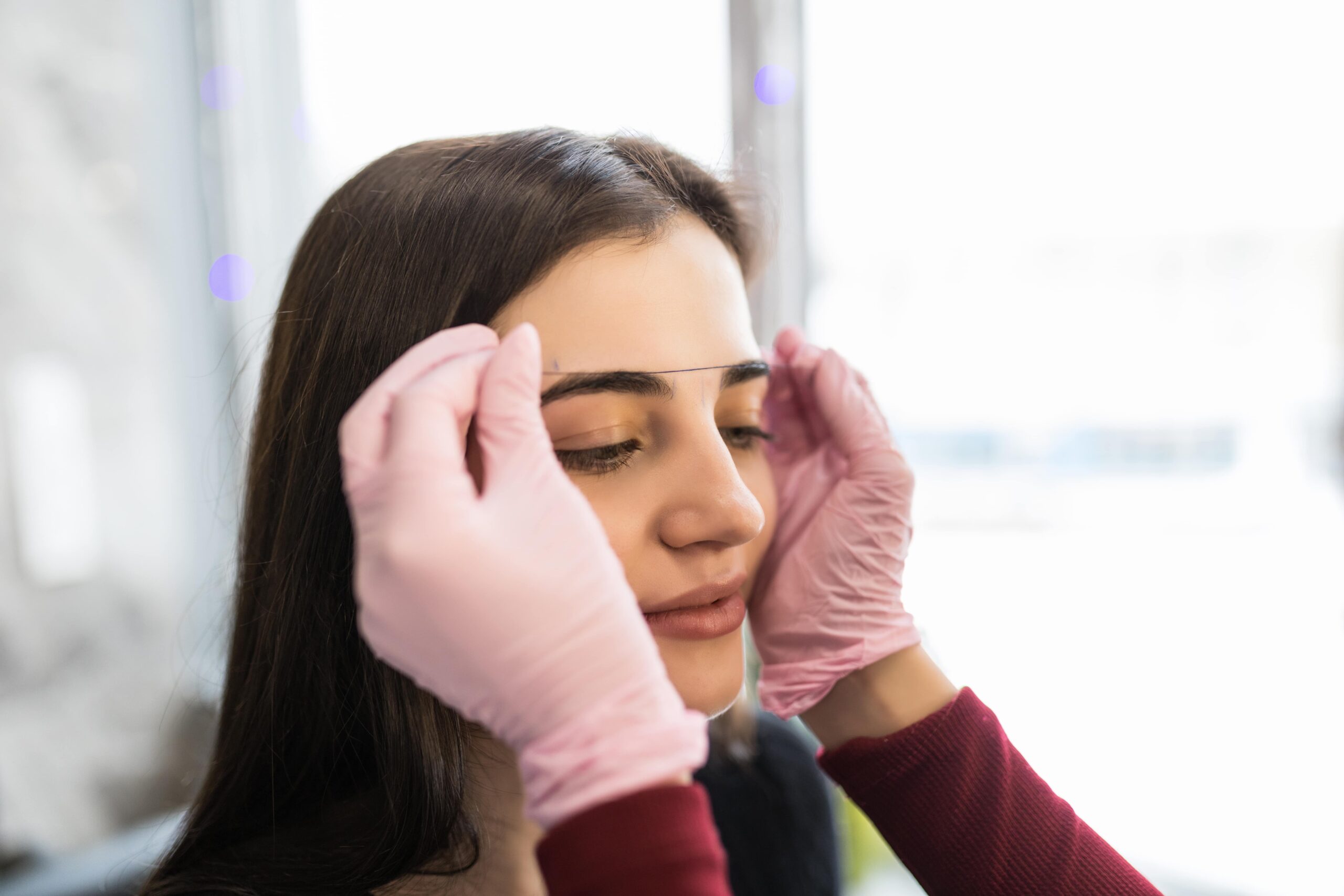
- January 26, 2024
- Comments: 0
- Posted by: Support Team
Eyebrow threading has become increasingly popular in recent years as a method of grooming and shaping eyebrows. This ancient technique originated in the Middle East and South Asia and has gained popularity worldwide due to its precise and long-lasting results. Eyebrow grooming is an essential part of many people’s beauty routines, as well-groomed eyebrows can enhance facial features and create a polished look.
What is eyebrow threading and how does it work?
Eyebrow threading is a hair removal technique that uses a thin cotton thread to remove unwanted hair from the eyebrows. The thread is twisted and rolled over the hair, catching the hairs in the thread and pulling them out from the root. This method allows for precise shaping and can remove even the finest and shortest hairs.
The history of eyebrow threading dates back centuries, with origins in ancient Persia (modern-day Iran) and India. It was traditionally used by women to shape their eyebrows, remove facial hair, and create intricate designs on their skin. Over time, eyebrow threading spread to other parts of the world and gained popularity for its effectiveness and precision.
The process of eyebrow threading involves several steps. First, the technician will cleanse the area around the eyebrows to remove any dirt or oils. Then, they will use a cotton thread that is twisted into a loop or “lasso” shape. The technician will hold one end of the thread in their mouth and use their hands to manipulate the other end. They will then use the looped thread to catch and remove individual hairs by quickly pulling them out from the root. This process is repeated until the desired shape is achieved.
How long does eyebrow threading last?
The duration of eyebrow threading can vary depending on several factors. On average, eyebrow threading can last anywhere from two to six weeks before new hair growth becomes noticeable. However, this timeframe can be influenced by factors such as individual hair growth rate, hormonal changes, and personal grooming habits.
The longevity of eyebrow threading can also be affected by the thickness and density of the hair being removed. Thicker and denser hair may take longer to grow back compared to finer and sparser hair. Additionally, the skill and technique of the technician performing the threading can also impact how long the results last. A skilled technician will be able to remove hair more effectively, resulting in longer-lasting results.
The difference between threading and other eyebrow grooming methods
Eyebrow threading is just one of several methods available for grooming and shaping eyebrows. Other popular methods include waxing, tweezing, and microblading. Each method has its own pros and cons, and the choice of method will depend on individual preferences and needs.
Waxing involves applying a layer of hot or cold wax to the eyebrow area and then quickly removing it, along with the unwanted hair. This method is quick and efficient, but it can be painful and may cause skin irritation or redness. Tweezing involves using a pair of tweezers to pluck individual hairs from the root. This method is precise but time-consuming, especially for those with thicker or denser eyebrows. Microblading is a semi-permanent tattooing technique that uses a small handheld tool to create fine hair-like strokes on the skin. This method can provide long-lasting results but requires regular touch-ups.
How to prepare for an eyebrow threading session
Before your eyebrow threading session, there are a few things you can do to ensure the best results. First, make sure your eyebrows are clean and free of any makeup or oils. This will allow the technician to see the natural shape of your eyebrows and remove hair more effectively. It’s also a good idea to avoid using any skincare products or treatments that may irritate the skin before your session.
Additionally, it’s important to communicate your desired eyebrow shape and thickness to the technician. They will be able to assess your natural eyebrow shape and make recommendations based on your preferences. It’s also a good idea to bring reference photos or examples of the eyebrow shape you would like to achieve.
 What to expect during an eyebrow threading session
What to expect during an eyebrow threading session
During an eyebrow threading session, you can expect the technician to follow a specific process to shape and groom your eyebrows. First, they will cleanse the area around your eyebrows to remove any dirt or oils. Then, they will begin the threading process by twisting and rolling the thread over the hair, catching and removing individual hairs from the root.
The pain level during eyebrow threading can vary from person to person. Some people may experience minimal discomfort, while others may find it more painful. However, the pain is usually brief and subsides quickly after each hair is removed. If you have a low pain tolerance, you can apply a numbing cream or take over-the-counter pain medication before your session.
The duration of an eyebrow threading session can vary depending on the individual’s hair growth and the desired shape. On average, a session can take anywhere from 10 to 30 minutes. The technician will work carefully and methodically to shape your eyebrows according to your preferences.
Aftercare tips to prolong the life of your eyebrow threading
After your eyebrow threading session, there are a few things you can do to ensure that the results last as long as possible. First, avoid touching or rubbing your eyebrows immediately after the session, as this can cause irritation or redness. It’s also important to avoid applying any makeup or skincare products to the area for at least 24 hours.
To maintain the shape and cleanliness of your eyebrows, it’s recommended to use a clean spoolie brush or eyebrow comb to brush them into place daily. This will help keep them looking neat and tidy. Additionally, avoid excessive sweating or exposure to water for at least 24 hours after the session, as this can cause the hair follicles to become clogged and lead to ingrown hairs.
How often should you get your eyebrows threaded?
The frequency of eyebrow threading will depend on individual hair growth and personal preferences. On average, most people will need to get their eyebrows threaded every two to four weeks to maintain the desired shape. However, some individuals with slower hair growth may be able to go longer between sessions.
It’s important to pay attention to the signs of new hair growth and book your next threading session before the hairs become too long or unruly. Regular maintenance will help keep your eyebrows looking groomed and prevent them from becoming overgrown or misshapen.
Can eyebrow threading damage your skin or hair follicles?
When performed by a skilled and experienced technician, eyebrow threading is generally safe and does not cause any damage to the skin or hair follicles. However, there are some risks and side effects associated with threading that you should be aware of.
One potential risk is skin irritation or redness, especially for those with sensitive skin. This can occur immediately after the session but usually subsides within a few hours. In rare cases, threading can cause minor cuts or abrasions if the technician is not careful or if the skin is pulled too tightly.
To minimize the risk of these side effects, it’s important to choose a reputable salon or technician who follows proper hygiene practices and uses clean and sterilized tools. It’s also important to communicate any allergies or sensitivities you may have before the session.
The benefits of eyebrow threading over other methods
Eyebrow threading offers several advantages over other methods of eyebrow grooming. One of the main benefits is its precision and accuracy. The thread allows for precise shaping and can remove even the finest and shortest hairs, resulting in a clean and defined eyebrow shape.
Threading is also a suitable option for all skin types, including those with sensitive skin. Unlike waxing, which can cause skin irritation or redness, threading is a gentle and non-invasive method that does not involve any chemicals or heat. This makes it a safer and more comfortable option for those with sensitive skin.
Another advantage of threading is its long-lasting results. Unlike tweezing, which only removes individual hairs, threading removes hair from the root, resulting in slower regrowth. This means that the results of threading can last longer compared to other methods.
Frequently Asked Questions
1. Is eyebrow threading painful?
The level of pain during eyebrow threading can vary from person to person. Some people may experience minimal discomfort, while others may find it more painful. However, the pain is usually brief and subsides quickly after each hair is removed.
2. How long does an eyebrow threading session take?
On average, an eyebrow threading session can take anywhere from 10 to 30 minutes. The duration will depend on individual hair growth and the desired shape.
3. How often should I get my eyebrows threaded?
Most people will need to get their eyebrows threaded every two to four weeks to maintain the desired shape. However, some individuals with slower hair growth may be able to go longer between sessions.
4. Can eyebrow threading cause ingrown hairs?
While it is possible for eyebrow threading to cause ingrown hairs, this is rare when performed by a skilled technician. To minimize the risk of ingrown hairs, it’s important to follow proper aftercare instructions and avoid touching or rubbing the eyebrows immediately after the session.
Eyebrow threading is a popular method of grooming and shaping eyebrows that offers precise and long-lasting results. This ancient technique has gained popularity worldwide due to its effectiveness and suitability for all skin types. By following proper aftercare instructions and regular maintenance, you can enjoy well-groomed eyebrows that enhance your facial features and create a polished look.
